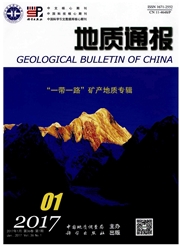

 中文摘要:
中文摘要:
吐拉花岗岩体位于阿尔金断裂南侧吐拉以东40km处。岩石化学以富Si高K、低Mg贫Ca、偏铝质及TFeO/MgO比值很高为特点,A/CNK比值为0.918~0.969。岩石稀土元素总量高,强烈富集HFSE,明显亏损Ba、Sr、P、Ti,稀土元素配分模式为典型的“右倾海鸥型”,属于偏铝质A型花岗岩,进一步分析属A2(PA)亚型岩体。该花岗岩形成于中泥盆世末期造山后的伸展环境,这一环境很可能与同期阿尔金断裂左行走滑引起的拉分作用有关。
 英文摘要:
英文摘要:
The Tula A-type granite pluton is located 40 km east of Tula Town, at the south side of the Altyn Tagh fault. Petrochemically, it is Si-rich, K-high, Mg-low and Ca-poor, metaluminous with very high TFeO/MgO ratios (from 13.5 to 61.1) and A/ CNK=0.918-0.969. The granite has a higher REE abundance with ∑REE =159-187μg/g and is strongly enriched in HFSE but ob viously depleted in Ba, Sr, P and Ti. It shows typical "right-inclined seagull wing-shaped" REE distribution patterns, belonging to metaluminous A-type granite. Further analysis indicates that the Tula granite belongs to the A2 (PA) subtype and was formed in an postorogenic extensional environment at the end of the Middle Devonian. This environment is very likely to be associated with pulling-apart caused by the sinistral strike-slip motion of the Altyn Tagh fault.
 同期刊论文项目
同期刊论文项目
 同项目期刊论文
同项目期刊论文
 An Early Paleozoic double- subduction model for the North Qilian oceanic plate: evidence from zircon
An Early Paleozoic double- subduction model for the North Qilian oceanic plate: evidence from zircon 期刊信息
期刊信息
